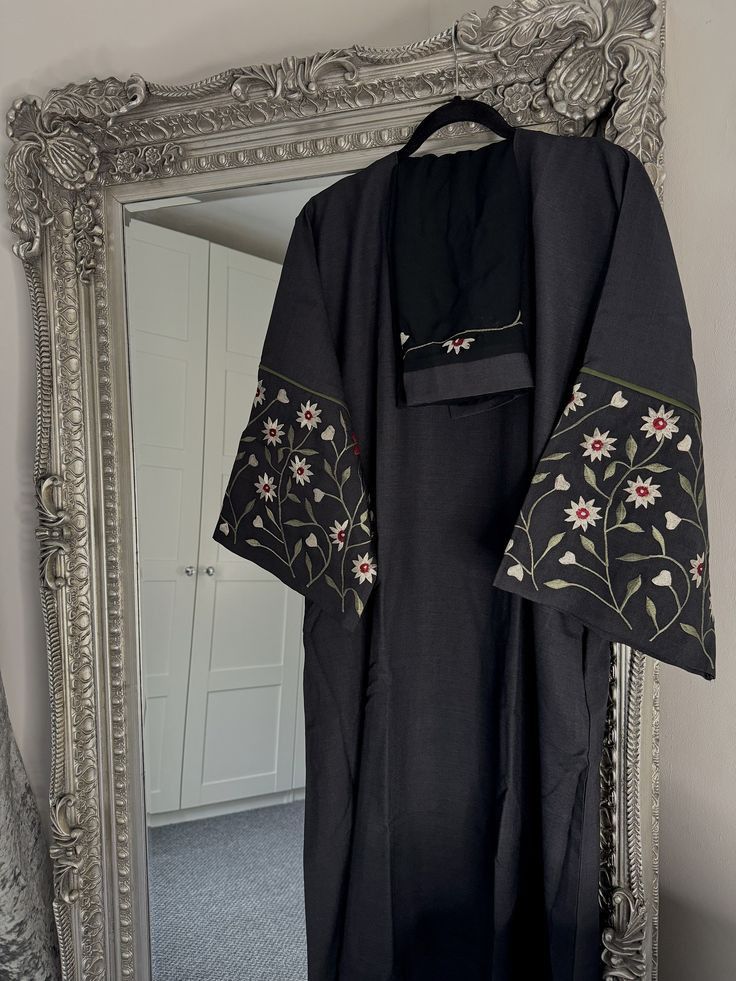
How to Care for Your Embroidered Abayas (Without Damaging the Details)
Share
Embroidered abayas are a beautiful blend of tradition, craftsmanship, and elegance. But without proper care, even the finest embroidery can fray, fade, or lose its shape. Whether it’s delicate floral threadwork or structured geometric patterns, knowing how to clean and store embroidered abayas is essential to preserving their quality and appearance over time.
This guide will walk you through the best ways to wash, dry, iron, and store embroidered abayas—with practical tips to help extend their life while keeping the details intact.
1. Understand the Fabric First
Most high-quality abayas—especially those with embroidery—are made from fabrics like Nida, crepe, or silk blends. These materials drape beautifully but need gentle handling.
If your abaya uses Saudi-grade Nida fabric ( just like at AlHejab), it’s designed for both comfort and durability, but the embroidery threads are still sensitive to heat, pressure, and friction.
✅ Tip: Always read the care label or brand instructions before washing, especially for custom or heavily embroidered pieces.
2. Hand Wash is the Safest Option
The safest way to clean an embroidered abaya is to hand wash it in cool or lukewarm water.
How to hand wash embroidered abayas:
- Turn the abaya inside out
- Fill a basin with water and a small amount of mild detergent
- Soak for 5–10 minutes
- Gently agitate with your hands, avoid rubbing or scrubbing
- Rinse thoroughly and avoid twisting the fabric
⚠️ Avoid: Bleach, harsh detergents, or scented softeners. These can weaken embroidery threads or leave residue.
3. If Machine Washing, Use a Mesh Bag
If you must use a washing machine, take these precautions:
- Place the abaya in a mesh laundry bag
- Use cold water
- Choose the delicate or hand-wash cycle
- Skip the spin cycle if possible, or set it to low
Avoid washing embroidered abayas with heavy clothing (like jeans or towels), which can cause friction and snag the threads.
🧺 Pro tip: Wash similar fabrics together to avoid abrasion or color transfer.
4. Don’t Hang Wet – Lay Flat to Dry
Hanging an embroidered abaya while it’s wet can distort the fabric and embroidery due to the weight of the water. Instead:
- Lay it flat on a clean, dry towel
- Press gently to absorb excess water
- Let it air dry in a shaded, ventilated area
☀️ Avoid direct sunlight, which can fade both fabric and thread colors over time.
5. Ironing and Steaming Embroidered Areas
Heat is one of the main causes of embroidery damage. If your abaya needs pressing:
- Use a garment steamer if available — it’s safer and easier on the threads
- If ironing, turn the abaya inside out and place a cotton cloth between the iron and embroidery
- Use low heat, no steam directly on the threads
🧕 Many embroidered abayas (especially with high-quality fabric like Nida) soften and settle naturally after wear.
6. Store It the Right Way
Proper storage protects your abayas from dust, moisture, and creases — especially important for seasonal or occasional wear pieces.
Storage tips:
- Use padded or velvet hangers to maintain the shape
- Cover with breathable garment bags (avoid plastic)
- For long-term storage, fold gently with tissue paper to cushion the embroidery
🌸 Avoid overcrowding your wardrobe — embroidery can flatten or crease under pressure.
Final Thoughts
Embroidery adds timeless beauty to any abaya — but it needs the right care to stay that way. With a few small steps, you can make sure your abayas continue to look graceful, polished, and long-lasting, no matter how often you wear them.
Have questions about caring for your specific abaya design?
Reach out via our contact page or check the care instructions included with your order.
